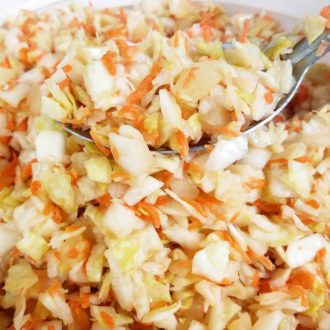Gut-friendly ferments are big business in the Asheville food scene, and now those probiotic-rich bites may be becoming popular with pets as well.
“Our pets are just like us humans: A lot of them are eating horrible food, and it’s creating a lot of health problems,” says local pet nutrition and fermentation educator Noel Thurner.
Thurner, who keeps two bearded collies, two cats and a flock of chickens at her home near Sapphire, partners with local veterinarians, the WNC Fermenting Festival, the Asheville-based Green Earth Pet Food company and others to offer workshops and demonstrations on using ferments to improve pets’ microbiomes — the colonies of beneficial microorganisms that inhabit the digestive systems of humans and animals.
She first began creating her own fermented foods at home decades ago after reading the works of Sally Fallon, Weston A. Price and Sandor Katz. And it wasn’t long before it occurred to her that her pets could benefit from ferments as well.
“As more information started coming out on the gut biome and that we need a variety [of beneficial bacteria], I thought, ‘Gosh, so do my pets,’” she says.
Thurner was already providing her canine and feline companions with a fresh, raw diet. And as a vegetarian, she had plenty of kitchen vegetable scraps available, which she had been feeding her chickens. So she began grinding those veggie peels and trimmings then fermenting them into a probiotic relish to add to her pets’ meals. During a fermenting workshop with Katz, she mentioned what she was doing, and he coined the term “fur-ments,” which she still uses.
“I teach [this process] to people because it’s not expensive. And if you think about what people throw away with their vegetable waste, there’s so much diversity,” she says. “Each vegetable comes with its own set of nutrients and phytates.”
Thurner’s process for making fur-ments is simple: She keeps a container in her freezer where she collects her raw vegetable scraps until she has the amount she wants. She then thaws them, weighs them, grinds them in a food processor and mixes them with 1 teaspoon of salt (she uses Redmond brand unrefined salt for its mineral and nutrient content) per pound of vegetable matter.
Once salted, the relish can be packed into glass jars with lids or airlocks and fermented at room temperature — about 68 degrees — for three to five days, then refrigerated. “A spoonful of this relish gives them a really good foundation for probiotics and nutrients,” she says.
Kefir, yogurt, raw goat milk and fresh seed sprouts, she adds, are other good probiotic foods for pets, but the vegetable ferments are crucial. “There’s a lot of variety, and the fiber also feeds the resident bacteria in the gut.”

Animals that are unaccustomed to ferments can be started off with a bit of the brine, then work their way up to the veggies themselves, she points out. And mixing ferments with canned sardines can increase appeal along with levels of omega-3 fatty acids. “If someone has a picky pet, I highly recommend sardines packed in water and blending with ferments,” she says.
Thurner notes that pet owners who are not DIY-inclined can also opt to purchase high-quality vegetable ferments normally intended for people, such as those made by local companies like Fermenti.
Unsurprisingly, Fermenti owner Meg Chamberlain, who keeps a cat, a dog and chickens on her Madison County homestead, also tends to her pets’ microbiomes with fermented foods. Her dog receives a mostly raw diet with eggs, meats and a tablespoon of plain sauerkraut mixed in with kibble for each meal. The cat receives regular canned cat food augmented with a teaspoon of plain sauerkraut.
Even Chamberlain’s chickens get gut-healthy foods, including fermented and fresh vegetable scraps and even fermented locally grown, organic corn. “We knew about feeding the chickens ferments from our time homesteading, but we only recently started feeding it to our home pets within the last three years,” says Chamberlain.
In making ferments for animals, she prefers to keep it plain. “I like jicama and red cabbage together a lot. Just avoid garlic, onions and such,” she says.
Chamberlain echoes Thurner on the multiple benefits of veggie ferments for pets. “When you consume fermented foods, you are getting 400-700% more nutritional value than from regular foods; the same is true for our animal friends. You are also getting soluble fiber, which feeds prebiotics and helps remove toxins from your system.”
Veterinarian Dr. Lisa Pantzer, owner of Holistic Veterinary Services of Asheville, adds that going organic is also important for boosting good bacteria to combat toxins. “Glyphosate is incorporated into the cells of plants, and it really inhibits bacterial growth, so the most important thing is to try to feed organic or natural food,” she says.
“We’re getting a very lethal buildup [of toxins] in the food that we eat, and we can’t avoid glyphosate,” she continues. “I think there are some very important things that we can add to the diet, like ferments, to help [pets] not be affected so badly.”
Even if pet owners are simply feeding kibble, says Pantzer, adding all five colors of organic fermented vegetables — including cruciferous varieties for their cancer-fighting sulfur groups — can be very beneficial. She also recommends incorporating raw goat milk kefir (which is incubated at a low, probiotic-friendly temperature) and raw organ meat, such as kidney and heart, regularly into pets’ diets.
“I think you can overcome a lot of the ills of dog food by adding those things,” she says.




I needs to spend some time learning more or understanding more.